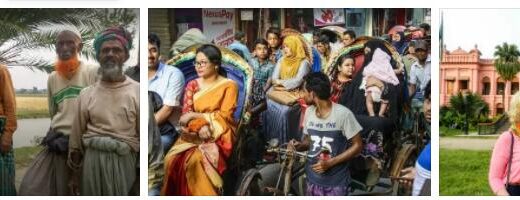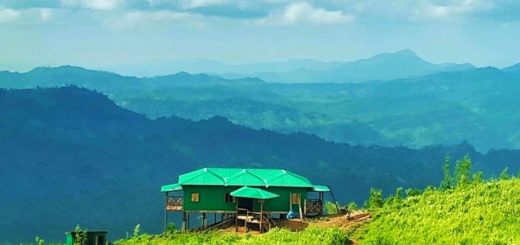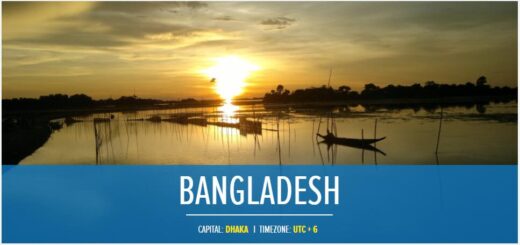Sightseeing in Bangladesh
Sonargaon and the mangrove forests
A stay in Sonargaon combines two things: Here the guest walks in the footsteps of a rich history and is at the same time on the threshold of the largest mangrove forests in the world. The historic city of Sonargaon is located thirty kilometers southeast of Dhaka and was once the trading and power center of the region in what is now Bangladesh. It is the huge delta of the Ganges, Brahmaputra and Meghna that shapes this impressive landscape.
The metropolis of Isha Khan
Isha Khan, the political and military leader in medieval Bengal, left his stamp on the city of Sonargaon forever. In the 16th century he named it his metropolis, and anyone who strolls through the narrow streets today will come across the stone witnesses of the past again and again. In the meantime, Hindu temples, mosques, tombs and interesting buildings from the country’s colonial era define the face of this city. The Folk Art Museum Sonargaons achieved supra-regional importance.
The home of the sea nomads
Sonargaon is one of the starting points for trips to the Sundarbans, which means “beautiful forest”. These are the largest mangrove forests on our planet. Of the total of 10,000 square kilometers in the floodplain of the major rivers, 6,000 square kilometers are in Bangladesh and 4,000 square kilometers in neighboring India. The tangled waterways and narrow canals can only be navigated by boats, and only a few sea nomads live in the ramified rivers.
The Bengal tigers in the national park
Around thirty different types of mangrove are native to the Sundarbans. The river delta is a place of silence, declared a World Heritage Site by UNESCO and the refuge for numerous endangered animals. This is also the home of the Bengal tiger, of which there are said to be around three hundred specimens in Bangladesh and which are a constant threat to fishermen and collectors. The king tigers are shy, however, and those who visit the national park have a better chance of catching wild boars, crocodiles or deer in front of the camera lens.
Paharpur
Paharpur is one of the most famous sights in Bangladesh and is regularly visited by participants in international study trips. The village of Paharpur is located in the northwestern Naogaon district, around 5 km west of the city of Jamalganj. It was made famous by Somapura Makavihara. The ruins of what was once the largest Buddhist monastery south of the Himalayas are unique and have been a World Heritage Site since 1985.
Monastery as a home for religions
The huge Somapura Makavihara monastery was built in the 8th century by the Bengal king Dharmapala. Mahayana Buddhists lived on the site during the Pala Dynasty. Later the monastery became a place for many religions. Buddhists, Hinduists and Jainas prayed peacefully and together to their deities in the rooms and in the open air. Somapura Makavihara later became known under the name Paharpur as a symbol of Buddhist architecture in Asia and is now a popular destination when traveling through Bangladesh, which has so far been spared from mass tourism.
The ruins of the monastery show the outstanding architecture of the early dynasties. The area has an area of around 9 hectares. A total of 177 living cells were available to the residents of the monastery, which were arranged in a square around an inner courtyard. The central stupa was modeled on those in Myanmar and Java. The visitors can easily see the former floor plan. Terracotta reliefs and inscriptions on fired bricks have also been preserved.
Paharpur archaeological site
In the past decades, archaeologists found many remains of other stupas, inscriptions, terracotta ornaments and sculptures on the site of the complex. These valuable exhibits are exhibited in the modern Paharpur Museum, which is located just across from Somapura Makavihara.
Cox’s Bazar Beach
Cox’s Bazar Beach is one of the longest beaches in the world and is therefore one of the – not cultural, but scenic – highlights of a study trip to Bangladesh. It is located in the extreme southeast of the administrative district of Chittagong on the border with Myanmar.
Beach as an attraction
The beach, the length of which is given as 100 to 120 kilometers, begins at the town of Cox’s Bazar. Its name goes back to the British diplomat Hiram Cox, who worked here and died in 1799. The city of today’s Bangladesh with 60,000 inhabitants lived mainly from fishing for a long time, but has been gaining in importance as a seaside resort since the turn of the millennium and in the course of the nationwide promotion of tourism.
Many shops, restaurants, hotels and resorts have now been built on the first five kilometers of the beach – on Laboni and Kolatoli Beach. Most bathers can be found in this section. Apart from that, nature is still largely untouched at Cox’s Bazar Beach, extensive tropical rainforests line the coast, along which a road runs south to the Teknaf region in front of the coral island of St. Martin’s.
The paradisiacal environment
The Himchori waterfall is about ten kilometers from the start of the beach in Cox’s Bazar. Nearby, on a hill, is the Himchori viewpoint, to which several stairs lead up. Those who take the effort of the climb will be rewarded with breathtaking views of the Bay of Bengal. The viewpoint is a popular destination in the region, especially because of the magnificent sunsets.
The biggest attraction near the beach and the city is the Himchari National Park, founded in 1980. With its dense forests, impressive waterfalls and diverse flora and fauna, it attracts more than two million visitors every year. According to official information, almost 300 different species of birds can be admired, which is why the park is also a paradise for bird watchers. There are even some elephants and tigers here.



